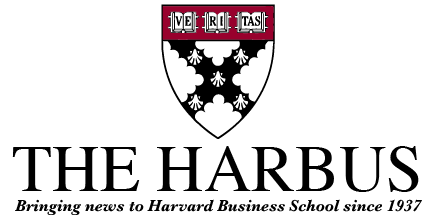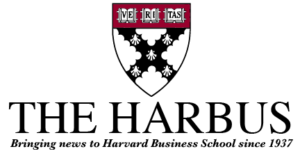Students may not have heard of the Harvard Green Campus Loan Fund, but they have certainly experienced it.
The Green Campus Loan Fund (GCLF) was created to provide capital for sustainability projects, and its managers mix business economics with environmental savvy to develop a smart solution to a common incentive problem.
Most large organizations separate their budgets for capital projects, utility spending, and maintenance costs. And, in most cases, a capital projects manager is not inclined to spend extra money that won’t directly benefit her own budget. The problem, is that incremental capital spending (on, for example, more efficient heating systems) can result in significant savings in utility and maintenance costs over the lifetime of the facility. The solution is a loan fund, which provides interest-free capital for up-front investments, and is repaid by the savings over the lifetime of the facility.
At $12 million in value, the Green Campus Loan Fund has funded over 150 projects across Harvard University. The payback period must be no greater than five years for existing buildings and ten years for new construction, though past loans have averaged just three years payback.
Financially, the investments have been extremely profitable for the University. In 2005, capital projects generated a return on investment of 30% (compared to a 2005 ROI of 19.2% for the Harvard endowment). As of June 2007, Loan Fund projects are projected to save the University $3.8 million per year in energy and maintenance costs. Environmentally, the fund has reduced greenhouse gas emissions by 22,000 metric tons of CO2 (equivalent to the emissions of 10,000 cars), dropped water usage by 86 million gallons, and reduced total waste by 200,000 pounds. The Green Campus Loan Fund has been such a success that many other universities, and the city of Cambridge, are following Harvard’s lead and establishing loan funds of their own.
While the goal of most projects is to improve energy efficiency, the actual projects focus on a variety of areas throughout campus. Recent projects include changing lighting systems, improving heating and air conditioning systems, and investing in efficient kitchen equipment in dining halls. Other projects have tackled efficiency challenges in transportation, irrigation, and solar power.
The Harvard Green Campus Initiative (HGCI) manages the Loan Fund. Leith Sharp, Director of HGCI, had this to say about it: “Our Loan Fund has been an essential and pioneering financial mechanism that has opened the way for enormous environmental impact reductions and financial returns for Harvard setting a powerful example for the world in terms of making a direct business case sustainability. But believe it or not, access to funds and decent returns are not enough. Time and attention can be as precious and hard to come by as money. What makes the Green Campus Loan Fund really work is the dedication, focus and creativity of the University community in pursuing sustainability.”
On the HBS campus, there are many examples of the fund in action. There have been a total of 18 business school projects funded by the GCLF, with a total value of over $1.7 million. Hamilton Hall is the first Harvard building to use the Green Campus Loan Fund for new construction, and the project is under review for Leadership in Energy and Environmental Design Gold certification (LEED). LEED is a national certification program managed by the US Green Building Council that reviews design, construction, and operations to provide ratings for green buildings. Changes at Hamilton include temperature setbacks based on occupancy sensors in each room, dual-flush toilets, faucets that reduce water consumption by 30%, and daylight-harvesting: room layouts that maximize exposure to natural light to reduce the need for electric lighting.
There are many other green projects to be found on or near the HBS campus. The HRES building One Western Avenue is already LEED Silver certified, and green features include heat recovery from kitchen exhaust (to reduce burden on the heating system) and energy-efficient glazed windows. 5 Cowperthwaite uses rainwater for irrigation, and has a specially designed cool-roof that minimizes heat absorption in the summer to reduce air conditioning costs. The Cowperthwaite building is also seeking LEED certification.
In Spangler’s dining area, HBS Operations has installed variable-speed vent hoods to reduce electricity use. They have also increased the efficiency of exterior lighting, reducing total energy usage to be at least 20% more efficient than local codes require (by eliminating upward-facing lights, for example).
Projects sponsored by the Green Campus Loan Fund are a great start to creating an energy-efficient campus, but there is still a lot of room to improve. The business school has one of the highest greenhouse gas emissions per capita among all Harvard graduate schools, standing at nearly 27,403 metric tons of CO2 equivalent per year. And even though architecture and design can improve sustainability, students still play an integral role in lowering total energy consumption. Turning off the lights when you leave a study room, keeping the heat low in the winter, and conserving hot water usage are small additions to daily habits that complement the buildings’ efficiencies. By taking personal steps to improve sustainability, students can join in lowering the school’s carbon footprint.
HBS Green Campus Loan Fund Projects To Date
Baker Hall Lighting Retrofit
Shad Hall Lighting Controls
Spangler Hall Breakout Room Light Occupancy Sensors
Campus Irrigation Management
Buden Hall Lighting and HVAC Control Upgrade
Shad Hall Cogeneration
Campus Exterior Security Light Upgrade
Shad Hall Photovoltaic Project
Tunnel Lighting Retrofit
Morgan Hall Lighting Retrofit
Morris Hall Lighting Upgrade
Kresge Lighting Retrofit
Burden Hall Lighting Retrofit
CWP Lighting Upgrade
Teele Hall Occupancy Sensors
Kresge & Spangler – Air Solutions Intelli-Hood
Hamilton Hall FCU Setbacks
Sherman / Wyss HANSA System

